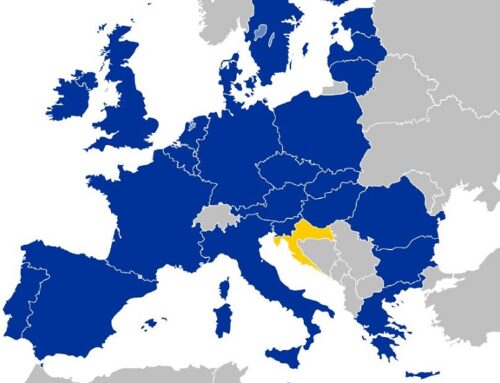Transformation of healthcare system is one of the most important transformation processes that former socialist countries had to undergo since 1990s. Inefficient, lacking innovation systems had to be modernized, market elements had to be introduced and financing issues had to be resolved. In this article we examine how Czech Republic, Slovakia, Poland, Hungary and Romania coped with the challenge and what was the outcome of the transformation for each of the countries.
In the beginning of 1990s, all of the countries had very common healthcare systems based on Semashko model which aimed at providing equal medical coverage for the whole population. Even though the whole population had free access to medical services, the model had structural problems such as shortages of medications, obsolete medical equipment and generally poor quality of medical services. Therefore, when the countries started to transform from socialism to market economy, major reforms were needed to improve health care systems, with the aim of making them more cost-efficient, innovative, flexible and market-oriented.
Czech Republic
Czech Ministry of Health started the transformation by decentralization reforms in 1989-1991, enhancing the power of local authorities. It was followed by other structural changes: in 1993 an obligatory health insurance system was introduced, in 1992-1996 privatization took place (from which large hospitals were excluded). As a result, a lot of health insurance companies appeared and health care management became a shared responsibility of government, professional chambers and private sector.
However, just in a few years structural issues of the new system started to appear: a significant part of health insurance companies did not manage to survive and bankrupted, which became a burden for state budget. Apart from that, health services providers (hospitals) also became highly indebted. To solve the issue Czech Ministry of Health conducted rationalization of hospital network in 1997-1999, reducing the number of beds and physicians and introducing deeper hospital specialization. The next reform on the supply side of health care system was conducted in 2000-2003: a large part of indebted state-owned hospitals was transferred to regional authorities. Their legal status was changed to joint stock companies in order to improve their financial status.
In the second half of 2000s under social-democratic government further privatization was blocked and a non-profit hospitals network was established in order to ensure geographical accessibility of healthcare services. Apart from this, Ministry of Health’s responsibilities grew: it started to control the scope and structure of health care provided, equipment, number of beds, personnel capacities and salaries.
However, later liberalization reforms were continued. Julínek reform (2011) introduced co-payments (additional payments per every visit and for drugs prescribed), which was a major shift from etatist model to a mixed-type one. Besides, insurance companies were allowed to contract all types of suppliers (private doctors, private or public hospitals) on a similar basis, which enhanced competition. It is also worth mentioning that individual accounts for every patient were created, which was an important step in collecting data[1].
During COVID Czech healthcare system coped well with the first wave of pandemic, however this success resulted in the public behavior becoming careless and the government reluctant to implement harsh restrictions during subsequent waves. This resulted in Czech Republic healthcare system performing very poorly during the next waves[2].
Generally Czech healthcare system is currently far more developed than those of other countries examined. Czech Republic ranks 14 in the list of best health care systems, while Slovak, Polish, Hungarian and Romanian health care systems rank approximately 50-80, according to the rating system[3][4]. As a result of large-scale privatization strong and innovative private sector has appeared, while sustaining public sector with lower quality services and longer ques but at the same time substantially lower prices[5] helped to ensure the access of the whole population to health care services.
Slovakia
Slovakia started its healthcare reforms in 1993 with the creation of Slovak National Health Insurance Fund, which was aimed at financing health insurances, sickness benefits and pensions. However, the system was introduced during economic recession, therefore no funding to the Fund was provided by the state in 1993 and only limited amount in 1994. Even though starting from 1995 financing improved, the system became indebted from the early beginning and later debts continued to grow. Similarly to the Czech case, debts became a burden for the national budget, as the government had to pay out the debts.
In 2002-2006 Slovak Ministry of Health conducted a reform aimed at tackling the debts issue. The reform included the introduction of co-payments, transformation of health insurance companies into joint stock companies, flexible prices on services and basic benefit packages, liberalization of ownership of pharmacies[6].
In 2007-2008 Slovakia similarly to Czech Republic introduced minimum network in territory care. Apart from this, co-payments for doctor visits were abolished and for drugs lowed significantly, profits of health insurance companies were limited to 4% of their total expenditure and state-owned insurance companies were changed from joint-stock companies to public agencies[7].
In 2010s Slovak Ministry of Health was mostly concentrated on strengthening financial efficiency of the system. In 2011 it tried to transform hospitals to joint stock companies, but the attempt failed due to the interference of the President[8]. In 2017 Slovakia managed to implement “Diagnosis-related group” payments system, which set the rules for evaluating of performance of hospitals’ departments[9]. In 2021 Slovak Ministry of Health started the next stage of reforms aimed at ensuring hospitals’ specialization. Hospitals are going to be specialized on those types of medical services they mostly provide. This can be seen as another attempt of the government to reach higher cost-efficiency of the sector. Apart from this, in 2022 medical staff salaries were risen by 46% due to medical staff strikes caused by low salary level and underfunding.
During COVID Slovak healthcare system was not able to fight the pandemic well, which to a large extend was caused by internal government conflicts. Apart from this, the government did not introduce lockdown in time and implimented a strategy of regular nationwide antigen testing instead, which turned out to be a mistake[10].
Generally Slovak healthcare system achieved far pooper results in comparison to Czech system. It remained not technological enough and did not reach financial stability, continuing to accumulate huge debts. This may be explained by such factors as insufficient specialization of hospitals, hospitals remaining not transformed to joint stock companies (in contrast to Czech Republic) and inconsistent co-payments policy.
Hungary
In Hungary in 1990s compulsory social health insurance system was also established, as well as the Health Insurance Fund, which was responsible for managing finances of the system. Provision of health services for non-contributing part of the population was shared by the Health Insurance Fund and the government. In order to get access to medical services, patients had to follow a multi-step procedure, with general practitioner being the first stage. This helped to reduce the number of visits and rationalize the systems from the very beginning. Apart from that, in 1993 diagnosis-related groups were introduced and outpatient specialty services started to be paid under a fee-for-service system[11].
Similarly to Czechia and Slovakia, Hungary concentrated on fighting excessive usage of healthcare system in the second half of 2000s. During 2006-2007 reform co-payments were introduced in primary and outpatient care, which decreased the demand. However, Hungarian government faced massive public opposition to the reforms, therefore these measures were subsequently repealed by a national referendum in 2008. Ministry of Health also excluded dental coverage from national health insurance, which helped to make the sector more cost-effective. Despite of the reforms, the rate of hospitalization has increased, and the share of primary care in health care spending has decreased. High level of utilization of medical facilities and the absence of co-payments system increased inefficiency of the sector.
Hungarian health care system underwent dramatic changes in 2010s under Fidesz government. Ministry of Health was replaced by Ministry of Human Resources, which was responsible for healthcare and welfare systems as well as some other responsibilities[12]. In the context of cutting-expenses policy, Hungary cut maximum amount of sickness benefit and the so-called passive sickness benefit (2011). Same year Ministry of Human Resources tried to implement an American health care model by allowing firms to purchase tax-free insurances for their employees as non-salary benefits, making risk insurances tax free and limiting its monthly cost. However, the change did not happen- large insurance companies did not launch a major PR campaign in order to attract patients to the new system.
Another track of healthcare policies consisted was management centralization: in 2011 the ownership and management tasks of the healthcare providers have been withdrawn from the local municipalities and transitioned to the National Institute for Organizational and Quality Development in Healthcare and Medicines (GYEMSZI). During 2010s constant administrative changes took place in an attempt of further streamlining of management[13].
It is important to mention that Hungarian healthcare system suffers damage from the lack of hospital privatization- hospital management does not have incentive to reach cost-effectiveness and fight deficits as debts are bailed out regularly by the government. Apart from this, providers to hospitals include budget overruns in their prices, which causes the inflation of prices.
In the context of fighting COVID in 2021 Hungarian Ministry of Health introduced a new reform, aimed at raising staff salaries (which are traditionally lower than average) as well as separating public and private medical care. According to the law, constraints were put on doctors’ ability to work both in public and private sector (which was a common practice before), besides, informal payments were criminalized. The law is criticized for that constraints on doctors’ private work will enhance brain drain, which had been considerable even before the reform. Together with relatively low salaries, new complicating conditions will make many doctors search for work in other EU countries, thus enhancing understaffing issue[14]. Apart from this, it’s worth to mention that Hungarian tactics of fighting the pandemic were relatively tough and military-oriented as army plaid significant role in sustaining lockdown[15]. Together with the Government gaining more power while specialized agencies such as Hungarian Medical Chamber having only limited influence on policies, this raised doubts about the state of democracy in the country.
Romania
In Romania a dual financing system was introduced in 1990-1998, with financing coming both from state budget and additional sources- special public health fund, World Bank funding etc. Apart from this, a system of family practitioners was created. In 1997 The Social Health Insurance Act was passed, according to which insurance contributions were made compulsory. A special autonomous public institution- NHIH- was created to administer health funds (starting from 1999). In 2002 another Social Health Insurance Act was passed, according to which the entire population had to be covered in a consolidated national social protection system and patients had freedom to choose medical facility to address. A unified national fund for social insurance (FUNASS) was created, which covered 75% of public health expenditures[16]. In the context of funding, Romania traditionally allocated less amount of finances on healthcare in proportion to its GDP then other countries examined: approximately 5,5% (approximately 6,5% average for the countries)[17]
It is important to mention, that in contrast to Visegrád countries, Romania did not conduct massive privatization, therefore its health system remained more centralized and state-oriented then in other countries examined. Over-centralization resulted in public sector remaining highly inefficient. Services are of poor quality, ineffective management of referrals to in-hospital care and overrated in-hospital services create substantial disproportions in the system. Hospitals face understaffing problem due to low wages, with patient flow occasionally exceeding hospital capacities.
In 2014-2020 Ministry of Health implemented a national health strategy “Health for Prosperity”, which did not imply major changes, but rather some specific steps such as centralized procurement of drugs or increasing healthcare budget (Budget law, 2017)[18].
In 2020 Romanian health care system underwent a substantial reform: the government started to finance private hospitals for emergency medical services and treating patients with chronic diseases. This is a major step away from a centralized model that Romania used to have[19].
Romanian healthcare demonstrated poor performance in fighting COVID. A significant role in the failure played public skeptical perception of the pandemic and vaccination in particular[20]. Romania has an extremely low level of vaccinated population. This, together with the Czech case, brings us to a conclusion that when fighting pandemic forming a healthy public perception is one of key goals of Ministry of Health.
Currently Romanian health care system ranks last among the countries examined in the article, which can be explained primarily by its inefficiency and over-centralization, with low wages being a critical issue due to a massive brain drain.
Poland
In Poland transformation of health care system started even later, than in Romania- in 1999, during the second wave of territorial and administrative reforms. Polish Ministry of Health followed a standard model of decentralization, creating a mixed budget-insurance model and transferring hospitals ownership to local authorities. However, initially Poland did not have a national health care fund, instead 16 regional and 1 specialized insurance funs were created in Polish regions.
The policy line of Polish Ministry of Health lacked continuity due to different views of Polish political parties on healthcare policy. In 2003 a partial recentralization of financing and the establishment of a single National Health Fund took place. Apart from this, private health insurance schemes were not implemented. The reform did not prove to be successful- National Health Fund did not have enough revenues to cover the costs and so debts started to appear. Local governments used the opportunity to sell hospitals both for fear of excessive costs and to acquire funds needed in other sectors.
In 2011 the Act on Medical Treatment was passed, which simplified the commercialization procedure for hospitals, which substantially enhanced further privatization. Besides, this period saw a dramatic increase in the number of private medical suppliers of different size. Tother with 2011 reform this led to health care becoming much more private-owned. This in turn led to an increase in the technological level, as private owners were eager to invest in advanced equipment. Therefore these period of reforms proved to be successful.
Polish healthcare system underwent dramatic changes after Law and Justice (PiS) victory in 2017. The whole trend on liberalization of the sector was reversed as insurance model was changed to a budgetary one. A specific network of hospitals was created with those hospitals that qualify for the network getting a guarantee of financing over a 4-year period.[21]. The reform was met with mixed comments- the growing stability of financing was praised, but concerns were expressed about possible limitations of services not provided by the network[22]. It also endangered the existence of hospitals that were not able to enter the network.
When fighting COVID Poland followed a standard pattern for the region: it handled the first wave well, however in the gap between the first and the second waves Polish government eased restrictions (including fully reopening schools) and transferred signals to public that there was no longer needed to be afraid of COVID. 2020 elections contributed to that, as PiS tried to get as many supporters to vote as possible[23].
Generally Polish healthcare system continues to have substantial structural problems such as inefficiency of hospital system and understaffing. Reforms implemented by PiS since 2017 did not bring a comprehensive solution and even resulted in shrinking finances in the sector[24]. Besides, the system has started to show signs of over-centralization.
Conclusion
We believe that generally the transformation of health care systems conducted by Ministries of Health of Visegrád countries and Romania is a vivid example of different efficiency of transformation models. One can easily spot a direct correlation between the level of deregulation of the industry and its performance. Czech Republic, being most consistent in deregulation (as it has a system of private insurance companies, a big number of private hospitals, state hospitals transformed to joint stock companies and a system of co-payments) managed to reach far better results than other countries. Slovakia generally followed Czech track but was far less consistent in its policy, both in terms of co-payments and hospital ownership. Poland after late start of the transition and inconsistent policy line in 2000s managed to build a medium-level deregulated model, but its policy was once again reversed with Law and Justice coming to power in 2017. The reforms after 2017 did not help to improve health care significantly and seem to have overcentralized it. Hungary did not conduct complex transformation in 1990s and 2000s and under Fidesz instead of enhancing privatization opted for further centralization (which together with Polish case brings us to a conclusion that populist governments tend to choose centralizing inefficient healthcare policies). Romanian healthcare system remains highly inefficient and over-centralized, even though since 2020 positive shifts can be observed. Therefore, this comparison shows us that consistent deregulation, including massive privatization, specialization and fighting excessive usage of medical services, together with ensuring access of the whole population to medical services is pivotal for a successful transformation of a healthcare system.
References:
[1] J. Nemec, M. Pavlík, I. Malý, Z. Darmopilová Kotherová Health policy in the Czech Republic: General character and selected interesting aspects, 2015. URL: https://www.researchgate.net/publication/283105852_Health_policy_in_the_Czech_Republic_General_character_and_selected_interesting_aspects
[2] I. Kottasová How the Czech Republic slipped into a Covid disaster, one misstep at a timeю – CNN. URL: https://edition.cnn.com/2021/02/28/europe/czech-republic-coronavirus-disaster-intl/index.html
[3] S. Ireland Revealed: Countries With The Best Health Care Systems, 2021. – Ceoworld Magazine. URL: https://ceoworld.biz/2021/04/27/revealed-countries-with-the-best-health-care-systems-2021/
[4] Numbeo.com: Health Care Index by Country 2022 Mid-Year URL: https://www.numbeo.com/health-care/rankings_by_country.jsp
[5] L. Smith Healthcare in Czechia finds success. – The Borgen project. URL: https://borgenproject.org/healthcare-in-czechia/
[6] Health System in Slovakia- hpi.sk URL: http://www.hpi.sk/en/category/health-system-in-slovakia/
[7] M. Verhoeven, V. Gunnarsson, S. Lugaresi The Health Sector in the Slovak Republic: Efficiency and Reform .- IMF Working Paper, Fiscal Affairs Department, 2007. – 25p. URL: https://www.imf.org/external/pubs/ft/wp/2007/wp07226.pdf
[8] M. Terenzani. President axes transformation.- The Slovak Spectator, 2011. URL: https://spectator.sme.sk/c/20041623/president-axes-transformation.html
[9] R. Kuenzel, V. Solanič. Improving the Cost-Effectiveness of Slovakia’s Healthcare System. – European Economy Economic Brief 041, 2018.- p. 6 URL: https://ec.europa.eu/info/sites/default/files/economy-finance/eb041_en_0.pdf
[10] K. Verseck COVID-19: Slovakia mired in chaos. – Deutsche Welle. URL: https://www.dw.com/en/covid-19-slovakia-mired-in-chaos/a-56740390
[11] B. Shang, E. Jenkner The Challenge of Health Care Reform in Estonia, Hungary, China, Chile, and Mexico.-
The Economics of Public Health Care Reform in Advanced and Emerging Economies//International Monetary Fund. – p. 331-334 URL: https://www.elibrary.imf.org/display/book/9781616352448/ch017.xml
[12] Website of the Hungerian Government. URL: https://2010-2014.kormany.hu/en/ministry-of-human-resources/organisation
[13] P. Mihályi. Recent changes in the Hungarian healthcare system, 2010–2017. – Zdrowie Publiczne i Zarządzanie 2017; 15 (3): 242–250 URL: https://www.ejournals.eu/Zdrowie-Publiczne-i-Zarzadzanie/2017/Tom-15-zeszyt-3/art/10705/
[14] F. Albert. Hungary reforms its healthcare system: a useful step forward but which raises some concerns.- ESPN Flash Report 2021/14.- 2p. URL: https://ec.europa.eu/social/BlobServlet?docId=23369&langId=el
[15] https://verfassungsblog.de/hungary-and-the-pandemic-a-pretext-for-expanding-power/
[16] L. Spiru, R. I. Traşcu, I. Turcu, M. Mărzan. Perpetual transitions in Romanian healthcare EPMA J. 2011 Dec; 2(4): 341–350. URL: https://www.ncbi.nlm.nih.gov/pmc/articles/PMC3405402/
[17] Macrotrends.net: Romania Healthcare Spending 2000-2022 URL: https://www.macrotrends.net/countries/ROU/romania/healthcare-spending
[18] Scintee SG and Vladescu C. Overview of the main incremental health care reforms introduced between 2014 and 2020 in Romania. (Original research). SEEJPH 2022, posted: 21 May 2022. DOI: 10.11576/seejph-5477 URL: https://www.seejph.com/index.php/seejph/article/view/5477
[19] Government opens competition between public and private hospitals in Romania. – Romania-insider.com URL: https://www.romania-insider.com/Romania-healthcare-private-hospitals-state-funds
[20] N. Thorpe. Covid: Romania’s health system torn apart by pandemic. – BBC. URL: https://www.bbc.com/news/world-europe-58992090
[21] Mikuła, Ł., & Kaczmarek, U. (2019). From marketization to recentralization: the health-care system reforms in Poland and the post-New Public Management concept. International Review of Administrative Sciences, 85(1), 28–44. https://doi.org/10.1177/0020852318773429 URL: https://journals.sagepub.com/doi/full/10.1177/0020852318773429#fn1-0020852318773429
[22] Katarzyna Dubas-Jakóbczyk, Iwona Kowalska-Bobko, Christoph Sowada, The 2017 reform of the hospital sector in Poland – The challenge of consistent design, Health Policy, Volume 123, Issue 6, 2019, Pages 538-543, ISSN 0168-8510, https://doi.org/10.1016/j.healthpol.2019.03.013. (https://www.sciencedirect.com/science/article/pii/S0168851018306237)
[23] W. Kość. Where did it go wrong for Poland’s pandemic response? – Notes for Poland. URL: https://notesfrompoland.com/2020/11/02/where-did-it-go-wrong-for-polands-pandemic-response/
[24] Katarzyna Dubas-Jakóbczyk, Iwona Kowalska-Bobko, Christoph Sowada, The 2017 reform of the hospital sector in Poland – The challenge of consistent design, Health Policy, Volume 123, Issue 6, 2019, Pages 538-543, ISSN 0168-8510, https://doi.org/10.1016/j.healthpol.2019.03.013. (https://www.sciencedirect.com/science/article/pii/S0168851018306237)
Photo: https://deutsch.radio.cz/aerzte-der-visegrad-staaten-protestieren-gegen-zustand-des-gesundheitssystems-8549428





